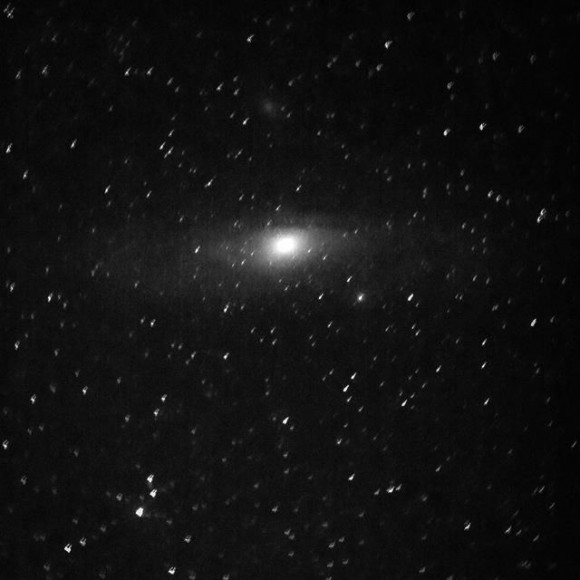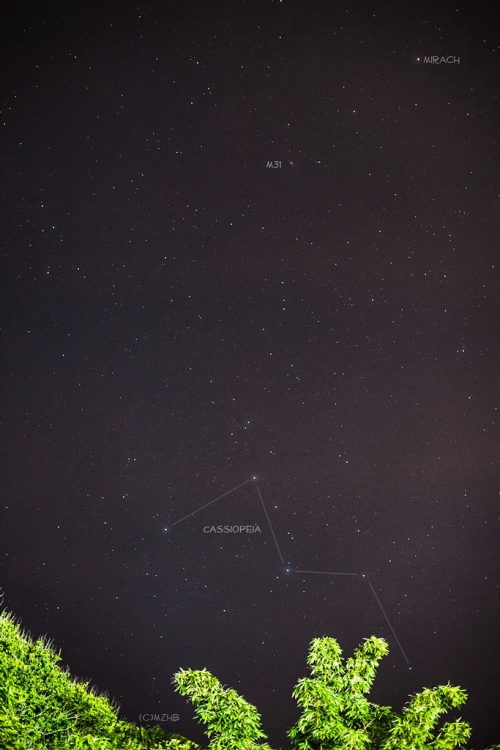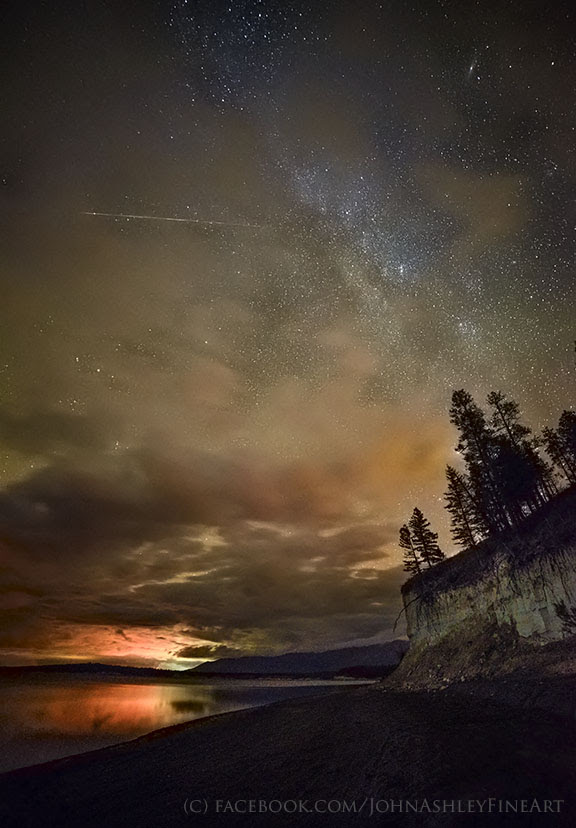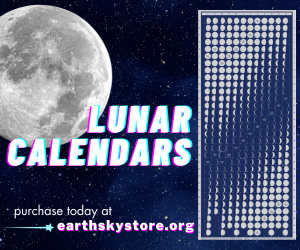Tonight … find the Andromeda galaxy, the next-nearest spiral galaxy to our Milky Way. Be sure to look this evening, starting at nightfall.
David Smith of Michigan wrote:
What is the easiest way to find the Andromeda galaxy at this time of year? I tried a couple times with my telescope but had no luck.
Many stargazers star-hop via the W-shaped constellation, Cassiopeia – shown on the chart above. As seen from the Northern Hemisphere on these November evenings, Cassiopeia appears in the northeast sky at nightfall and swings high to the north as evening progresses. It’s easy to spot, shaped like an M or W.
The 2019 lunar calendars are here! Order yours before they’re gone. Makes a great gift.
To see the galaxy, you need a dark sky. Note that one half of the W of Cassiopeia is more deeply notched than the other half. This deeper V is your “arrow” in the sky, pointing to the Andromeda galaxy.


You can also try scanning for the Andromeda galaxy with the unaided eye or binoculars. In a dark sky, you might spot it, as the early stargazers did before the days of star charts and optical aid.
The Andromeda galaxy is a large hazy patch in the night sky.
On a dark night, this galaxy looks like a faint smudge of light, about the size of a full moon.
Once you’ve found it with the eye alone, be sure to peer at it with binoculars or your telescope. The Andromeda galaxy is about 2.5 million light-years away, just a hop and a skip in astronomical terms. Like our Milky Way, this large spiral galaxy is teeming with hundreds of billions of stars.


Bottom line: One half of the W of Cassiopeia is more deeply notched than the other half. This deeper V is your “arrow” in the sky, pointing to the Andromeda galaxy.
All about the Andromeda galaxy
Use Great Square of Pegasus to find Andromeda galaxy
Easily locate stars and constellations during any day and time with EarthSky’s Planisphere.












